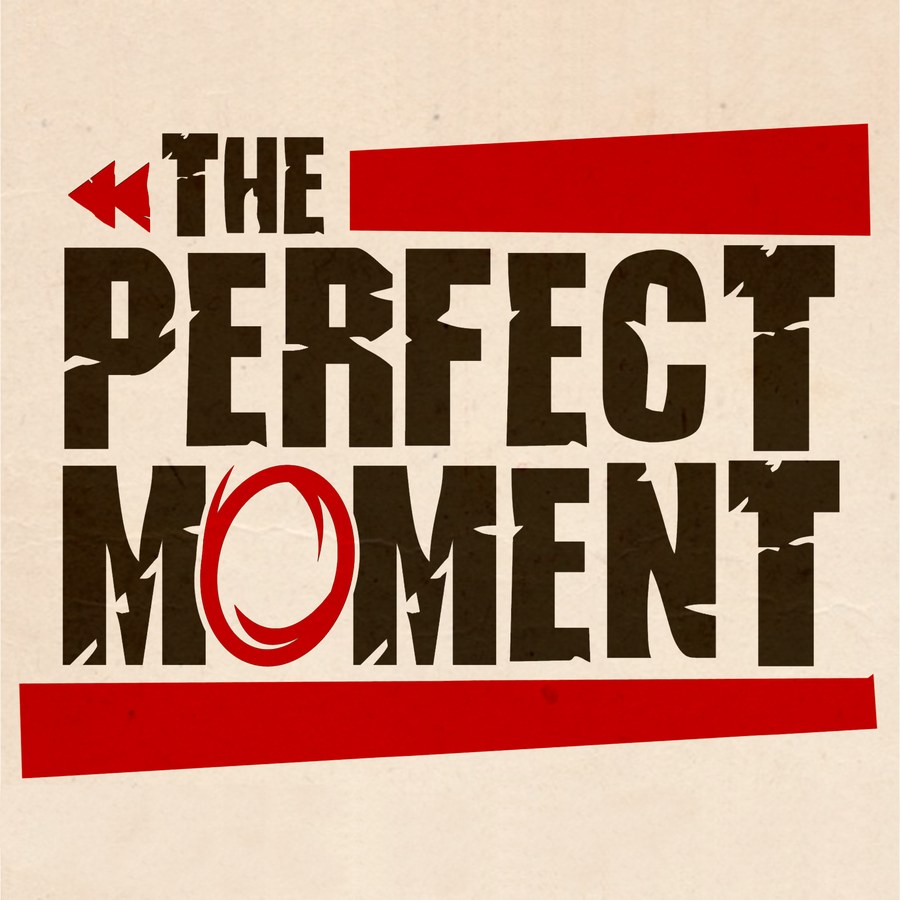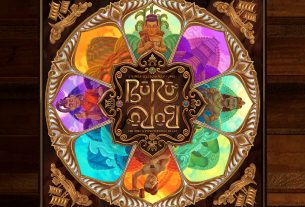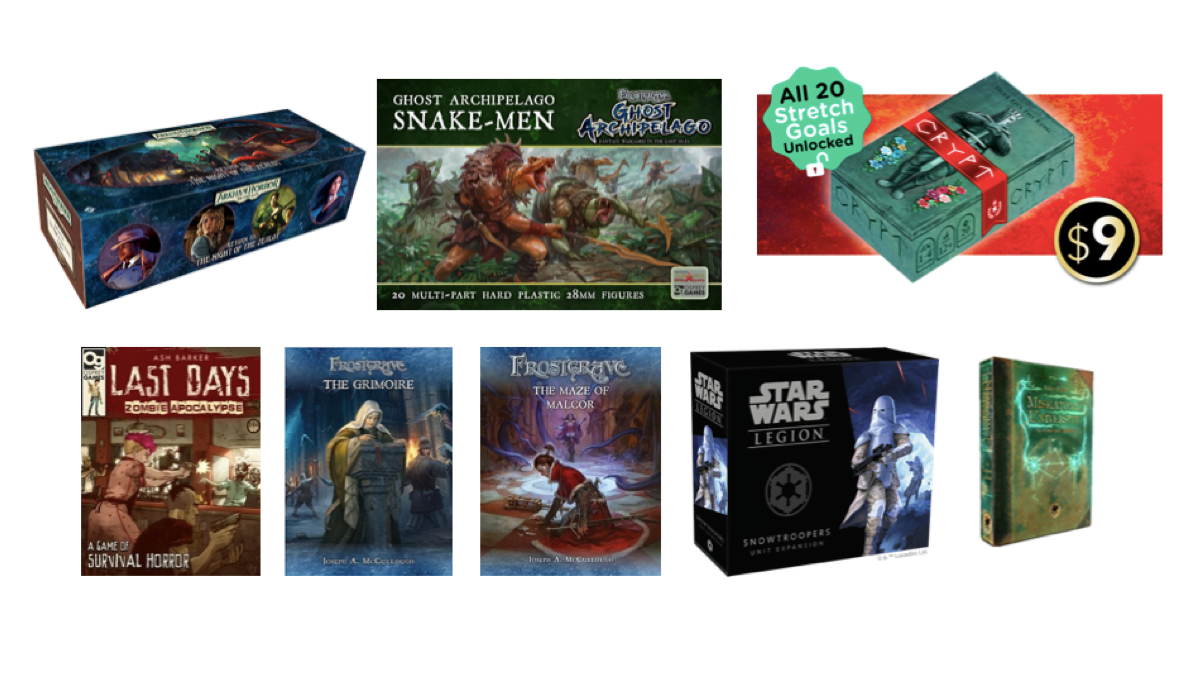If only. Those two short words divide what actually happened from what could have been. Now’s your chance—can you go back and create The Perfect Moment?
What Is The Perfect Moment?
The Perfect Moment is a game for 1 or 2 players, ages 8 and up, and takes about 15–30 minutes to play. It’s currently seeking funding on Kickstarter, with a pledge level of $10 for a copy of the game. (Other pledge levels are available for a print-and-play, or a versions that also include playmats or an expansion.) Thematically the game is fine for 8 and up, but the logistical puzzle may be a bit challenging for younger players.
New to Kickstarter? Check out our crowdfunding primer, and visit our Kickstarter curated page for more projects we love.

The Perfect Moment Components
Note: My review is based on a prototype copy, so it is subject to change and may not reflect final component quality.
The Perfect Moment is the latest wallet game from Button Shy Games, so it consists of 18 cards in a small vinyl wallet. Many of the wallet games end up getting mini expansions that will add more cards, though my prototype just has the base 18 cards (and no wallet).

Each of the cards has a year, which is also associated with the color of the card: 1981 is yellow, 1994 is red, and 2005 is blue. Each card also shows two items from that year—there are four items that belong with each year, and the cards have all the possible pairings. Each item has an ability, and each card also has a little flavor text that talks about the two items.

From the items and the text, it appears that there’s a robbery of some sort in 1981, a proposal in 1994, and a boxing match in 2005. I like the monochromatic illustrations, and the flavor text is just enough to give you an impression of the scene and lets you paint the rest of the picture yourself.
How to Play The Perfect Moment
You can download a draft of the rules here.
The Goal
The goal of the game is to score the most points by completing objectives before the deck runs out.

Setup
Shuffle the deck and place it in the center of the table, flipping the top card next to it as the Paradox. The Paradox should be sideways between the two players, with one item pointed toward the deck.
Each player draws 4 cards, and chooses one to equip in front of themselves, one to equip in front of the other player, one to return (top of the deck) or discard (bottom of the deck), and one to keep in their hand as their Revision. The player who completes setup first goes first.
Gameplay
On your turn, you may activate up to two equipped items, and then optionally score a card. You may use any of the items facing you, whether they’re in front of you or your opponent, and you may also use the item on the Paradox that’s facing the deck. Card effects may only be used on your cards, not your opponent’s, unless it specifically says it affects your opponent’s cards.
After finishing an action, you should make sure that you still have two equipped items and one Revision in your hand—sometimes this will involve equipping a card from your hand, or putting an equipped card back into your hand.

After your actions, you may score one card: the Paradox, your Revision, or a face-up card in either player’s scoring pile. You must have items on your equipped cards that match one or both of the items on the card you are scoring, though they can be facing toward you or away from you.
- If you can only match a single item, you score 1 point, placing the card face-up in your scoring pile
- If you can match both items but they’re facing in different directions, you score 2 points.
- If you can match both items and they’re facing in the same direction, you score 3 points.
For the 2 or 3 points, turn the card face down, orienting it to show how many points you’ve earned. You may score face-up cards in somebody’s scoring pile if you get at least 2 points, which then locks them in.
If you score the Paradox or your Revision, draw a card to replace it.

Game End
The game ends when a player gains 16 points, ends their turn with the deck empty, or tries to take a card from
the deck while it is empty. The highest score wins; ties go to the player who took the last turn.
Solo Variant
The solo mode has you playing against the Echo, which automatically cycles through the deck and potentially scores cards when there’s a match. You compare your final score against a chart to see how well you did against the Echo. Your turns are the same as in a regular game, but the Echo’s turns resolve differently.
Why You Should Play The Perfect Moment
I love time travel. That is, I love the theme of time travel—I’m not actually a time traveler myself. (Whew! Almost let that slip.) So I was pretty intrigued by the idea of a time travel wallet game and wondered how the theme would play out.
The Perfect Moment is all about setting up the right combination, getting the items into position by the end of your turn. It may not feel exactly like time travel, but it does feel a little bit like the logistical planning you might do before you time travel. “I need to remember the keys and the cell phone this time!”
Thematically, there’s not really a strong reason for why the cards do what they do—why does the ring let you trade cards with your opponent? Why does the wallet rotate one of your opponent’s equipped cards? What does that represent in the story? I think if you really want some immersion in the theme, you’re going to have to provide that yourself.
That said, it is a lot of fun if you’re the sort of player who loves pulling off card combos. Use the chocolates to draw 2 cards and equip one, which gets you the keys. Then use the keys to draw another card, dump your chocolates, equip the cell phone and activate it—which then lets you dump both the keys and the cell phone to draw two new cards … aha! Now you can equip the gun and the mask, which matches the Paradox, so you score it for 3 points.

The various cards let you rotate cards, trade cards, put cards on the top or bottom of the deck, and so on. Each turn, your ideal is to score 3 points, so you want to figure out how to get both required items facing the same direction on your equipped cards—but you can decide which card you want to match: the Paradox, your Revision, or any of the face-up scored cards. Scoring your own face-up cards locks them in so that they can’t be stolen. Scoring your opponent’s cards, of course, is great because you’re stealing points away from them.
As the game progresses, though, it will be harder and harder to score 2 or 3 points, because there won’t be as many cards left in the deck. Once somebody has scored two cards with poetry on them, there’s only one more poetry card remaining, which means there’s no way to match it. It gets pretty hard to remember which cards have been scored, too, though having a good memory will give you an advantage because you know what not to attempt. (Hmm, kind of like time travel, actually.)
Overall, despite the fact that the theme isn’t as immersive as I’d hoped, I do like the way the game plays out. I do like the look of the game, too, and the flavor text helps a bit with the theme even if the mechanics themselves don’t. It’s the sort of game that’s great for players who like puzzling out how to get cards into position; it won’t be quite as fun for players who get frustrated trying to work out the logistical puzzle.
If you like time travel (uh, the theme, of course) and puzzle-solving, check it out!
For more information or to make a pledge, visit The Perfect Moment Kickstarter page!
Click here to see all our tabletop game reviews.
![]() To subscribe to GeekDad’s tabletop gaming coverage, please copy this link and add it to your RSS reader.
To subscribe to GeekDad’s tabletop gaming coverage, please copy this link and add it to your RSS reader.
Disclosure: GeekDad received a prototype of this game for review purposes.






